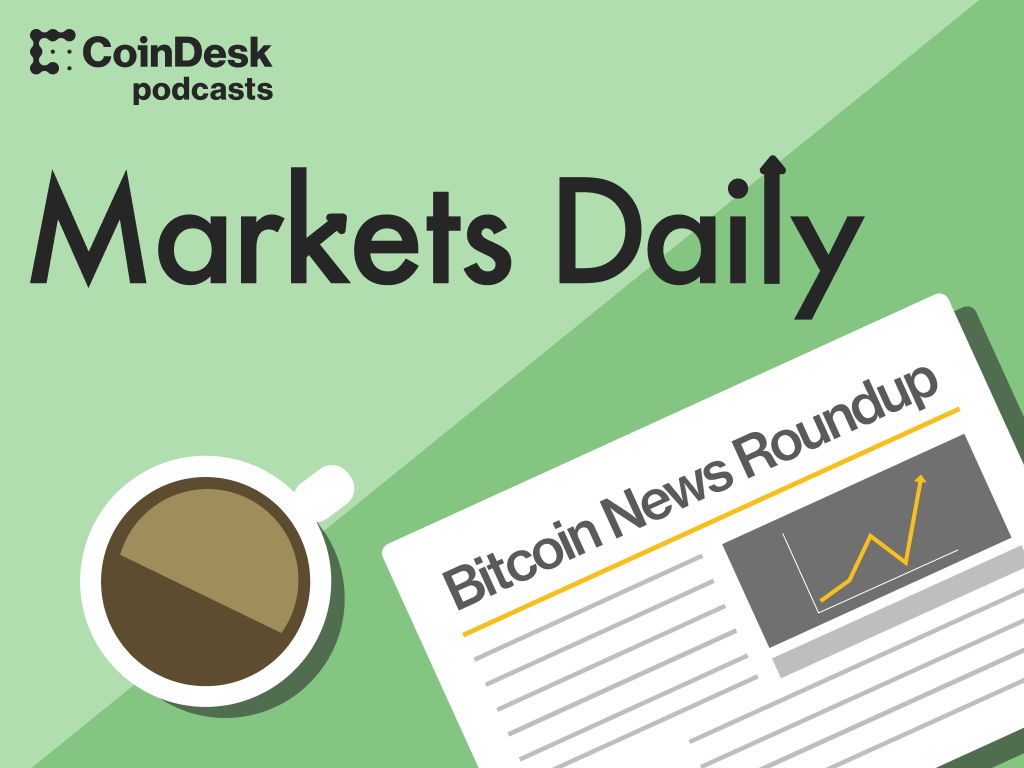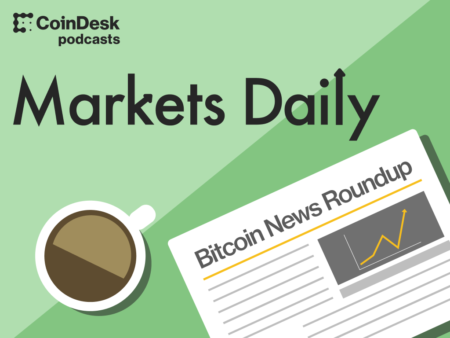Today’s episode is sponsored by CME Group.
To get the show every day, follow the podcast here.
Today’s Stories:
Chainalysis: The 2023 Global Crypto Adoption Index
Nigeria Lifting Ban on Bank Accounts for Crypto Firms Could Lead to Usage ‘Surge’
Erdogan Appoints Crypto Lecturer to Central Bank Rate-Setting Board – Bloomberg
India Issues Compliance ‘Show Cause’ Notices to 9 Offshore Exchanges Including Binance and KuCoin
From our sponsors:
CME Group Cryptocurrency futures and options provide market-leading liquidity for bitcoin and ether trading. These cash-settled contracts give full exposure to crypto performance without the hassle of holding the physical position. No digital wallet? No problem. Trade nearly 24/7 in a transparent, CFTC-regulated market. Visit cmegroup.com/crypto to learn more.
Disclaimer:
This communication is not directed to investors located in any particular jurisdiction and is not intended to be accessed by recipients based in jurisdictions in which distribution is not permitted. The information herein should not be considered investment advice or the results of actual market experience. Past results are not necessarily indicative of future performance. Trading derivatives products involves the risk of loss. Please consider carefully whether futures or options are appropriate to your financial situation.
This episode was hosted by Noelle Acheson. “Markets Daily” is executive produced by Jared Schwartz and produced and edited by Eleanor Pahl. All original music by Doc Blust and Colin Mealey.
Audio Transcript: This transcript has not been edited and may contain errors.
It’s Friday, December 29th, 2023 and this is Markets Daily from CoinDesk. My name is Noelle Acheson, CoinDesk collaborator and author of the Crypto is Macro Now newsletter on Substack. On today’s show, we’re talking about market moves, regulatory rumblings, financial conditions and more. So you don’t miss an episode, be sure to follow the podcast on your platform of choice, and turn on notifications. And just a reminder, CoinDesk is a news source and does not provide investment advice.
Now, a markets roundup.
Crypto markets are relatively quiet today, delivering mixed returns as traders start to wind down for the year. This is despite the expiry of a record $11 billion worth of bitcoin and ether options earlier today.
According to CoinDesk Indices, at 9 a.m. Eastern time, bitcoin was up two tenths of a percent, trading at 42, 817 dollars. Ether was down one percent, trading at 2,362 dollars. Elsewhere, Solana was up almost 9%, Avalance was up 2%, Cardano was down 1%, Binance Coin was down 5%.
Like I said, a mixed bag.
In macro matters, let’s take a look at where we’re at with rate expectations and liquidity conditions.
As we’ve discussed on previous episodes, things shifted after the last FOMC meeting. This left U.S. rates unchanged, but markets reacted strongly to what they perceived as a change in Fed Chair Powell’s tone during his statement and the press conference – there was much less emphasis on more rate hikes, and more emphasis on rates being high enough to bring down inflation, which the market took to mean cuts are coming soon.
Treasury futures are indicating an almost 80% probability of the first rate cut in or before March of next year, less than three months away. This is despite signs that the U.S. consumer is still strong, which could push inflation up again, especially if energy prices start climbing again.
If you’re wondering why markets are so obsessed with the outlook for U.S. rates, it’s because rate cuts in theory will unleash more monetary liquidity. Again in theory, this will find its way into markets and drive up prices, especially of riskier assets with long duration and relatively high volatility – such as, you guessed it, bitcoin and other crypto assets.
Even more important, though, are measures for financial conditions, such as the one put out by the Chicago Federal Reserve. The Chicago Fed’s financial conditions index takes into account money markets, which are highly dependent on interest rates. It also takes into account debt and equity markets, as well as the traditional and shadow banking systems, real estate loans, household debt, and other data points that might surprise you but that together help paint a picture of overall liquidity available for U.S. markets.
Well, the Chicago Fed index, which is updated weekly, shows that financial conditions are now as easy as they were in early 2022, before the Federal Reserve started hiking interest rates. And this is before any potential rate cuts next year.
What this means for Fed policy is unclear – it could be that the Fed will feel it doesn’t need to cut rates if financial conditions are just fine. Corporations having to pay more for loans and bond issuance may disagree, however.
It could also mean that if the Fed cuts, liquidity conditions will improve by enough to push inflation up again. This makes the decision to cut a tough call for the Fed. And it’s also why I don’t think they’ll be cutting in or before March.
In stocks, U.S. indices were largely flat yesterday, and futures pricing this morning suggests that today will be similar. All eyes are on whether the S&P 500 can reach a new all-time high before year end – it came close yesterday. If you want to join in today, the level to beat is 4,796. Yesterday the index closed just a quarter of a percent below that.
The main European indices were also flat yesterday, and so far today are slightly positive.
In Asian trading today, Japan’s Nikkei index dropped two tenths of a percent, the Shanghai Composite rose two thirds, and the Hang Seng closed flat.
In commodities, oil prices are holding steady for now, but are still on track for the first annual loss since 2020. Earlier today, the Brent crude benchmark was up almost half a percent, trading at 77 dollars and 85 cents a barrel.
Gold was trading this morning down two tenths of a percent on the day, at 2,061 dollars an ounce. Whatever happens to the price today, the metal looks set to lock in its first annual gain in three years, of roughly 13%. This is a strong annual performance for gold. But, for comparison, bitcoin delivered a 160% annual return, with ether coming in at 98%.
Stay with us – after the break we’re going to look at some encouraging moves in global crypto regulation.
Welcome back!
Since it has been a short week, I’m going to depart from the usual Friday format of answering a listener question. Instead, I want to talk about some intriguing moves over the past few days that suggest significant regulatory shifts in key crypto economies – specifically, Nigeria, Turkey and India.
You’re probably aware that these three countries have strong crypto communities despite unfriendly regulatory environments. In the Chainalysis 2023 Global Crypto Adoption Index, India ranks first in global crypto adoption, Nigeria is second, and Turkey is a pretty substantial 12th. We’ll put a link to the latest index report in the show notes.
So, let’s look at recent moves in these economies in reverse rank order, starting with Turkey.
A few days ago, President Erdogan made an unusual appointment to the interest rate setting committee of Turkey’s central bank. Fatma Ozkul, the appointee, is a professor of crypto assets and blockchain technology, who last year published a book on crypto accounting. More recently, she has reportedly been focusing on blockchain, crypto assets and their implications on finance.
This does not mean that crypto assets will play a part in central bank policy, but if the Turkish government is about to start working on a crypto framework, as it has said it will in 2024, it can’t hurt to have a knowledgeable expert straddling both the crypto and traditional finance worlds on the official team.
Now, on to Nigeria, where last week the central bank walked back its ban on commercial banks servicing even registered crypto companies. This ban, which dates back to 2021, prohibited businesses that deal in crypto assets from opening bank accounts which, as you can imagine, makes it hard to do business.
Nigeria’s central bank has also released a set of requirements that virtual asset service providers are expected to meet, paving the way for a more comprehensive and also supportive approach to the country’s growing crypto ecosystem. Chainalysis research showed that Nigeria was one of only six countries that saw an increase in cryptocurrency transactions in the year leading up to June 2023.
And finally, on to India. Yesterday, the country’s financial authority took action against unregistered crypto exchanges operating in the country, including ordering the communication ministry to block access to their websites urls. The exchanges impacted by this move are Binance, Kraken, Bitstamp and six others.
This is not so much a clampdown on crypto in India. Rather, it’s more a move toward regulation in a country that just a year ago was considering a blanket crypto ban.
And while this move is not good for crypto traders, it is good for India-based crypto businesses. Earlier this year, Bloomberg reported a local estimate that 95% of crypto trading volume had moved to unregistered offshore exchanges. This was in response to the imposition in 2022 of a 1% tax that had to be deducted at source for each crypto asset sale on India-based platforms. We could see some of the offshore exchanges decide to register in India in an attempt to retain trading volume.
Bigger picture, it’s a sign that India is finally gearing up to establish a legal framework for its crypto ecosystem. In turn, this could unleash even more innovation in an already innovative community, as well as more interest from India’s 1.4 billion population in crypto assets as portfolio diversifiers.
As we know, regulation tends to move slowly, especially if – like India – countries are eager to coordinate with global moves. The big takeaway, though, is the overall upside for crypto development and investment if these three key crypto ecosystems can finally start to grow their businesses with some regulatory clarity and local support. India, Turkey and Nigeria are very large crypto markets even today. Should they start to see accelerated growth, just imagine the impact on the market as a whole.
Read the full article here









